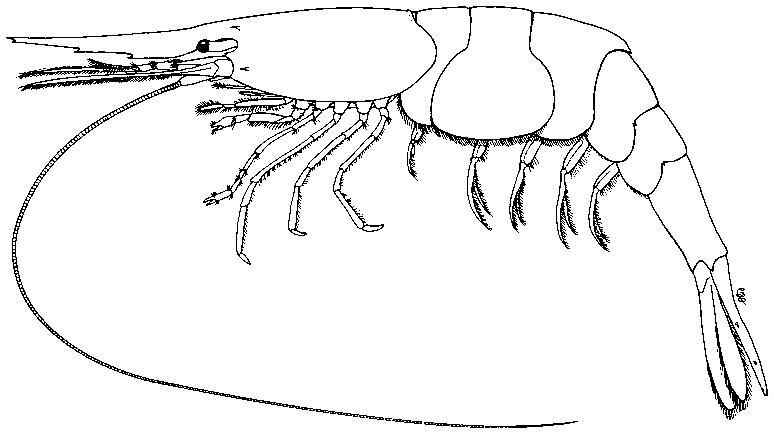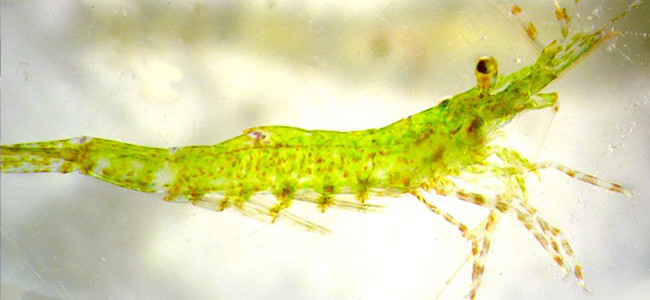Hippolyte inermis is a species of shrimp belonging to the family Hippolytidae, within the order Decapoda. The scientific name ‘Hippolyte‘ comes from Greek mythology, referring to the Amazon queen Hippolyta, likely alluding to the agility and active behavior of these shrimps. The specific epithet ‘inermis‘ means ‘unarmed‘ in Latin, referring to the absence of prominent spines or large claws in this species compared to other shrimps. This species is primarily found in the Mediterranean Sea and the eastern Atlantic, in shallow coastal habitats and seagrass beds of Posidonia oceanica, from depths of 0 to 50 meters.

In terms of morphology, Hippolyte inermis is a small shrimp, typically measuring between 1.5 and 3 cm in length. It has an elongated, laterally compressed body, with a short rostrum and no visible spines, which gives it the name ‘inermis‘. Its coloration varies depending on the environment and season, ranging from greenish and brownish tones to pinkish or reddish hues. This ability to change color allows it to camouflage effectively among the leaves of Posidonia oceanica and other algae, helping it avoid predators. It can be distinguished from similar species such as Hippolyte varians by its shorter rostrum and the absence of large spines or projections on the body.
Regarding its diet, Hippolyte inermis is primarily herbivorous, feeding on plant material, especially epiphytic algae growing on Posidonia oceanica leaves. It has also been observed consuming small organic detritus and animal remains, indicating a fairly versatile diet. This feeding strategy allows it to obtain nutrients without needing to move extensively, making the most of resources within its habitat.
The reproduction of Hippolyte inermis is particularly interesting due to its ability to change sex, a phenomenon known as protandry. Individuals start life as males, and as they grow and develop, some change sex to become females. This transition is influenced by environmental and social factors, such as population density. Females release their eggs in the summer, and the larvae go through several planktonic stages before settling and developing into juveniles.
An additional fact about Hippolyte inermis is its close relationship with Posidonia oceanica seagrass meadows, where it finds both food and camouflage. This species plays an important role in the seagrass ecosystem, not only contributing to the recycling of organic matter but also serving as prey for numerous fish and other marine predators. Its ability to change both color and sex makes Hippolyte inermis a fascinating subject for the study of adaptation and survival in dynamic coastal environments.
Photos:

